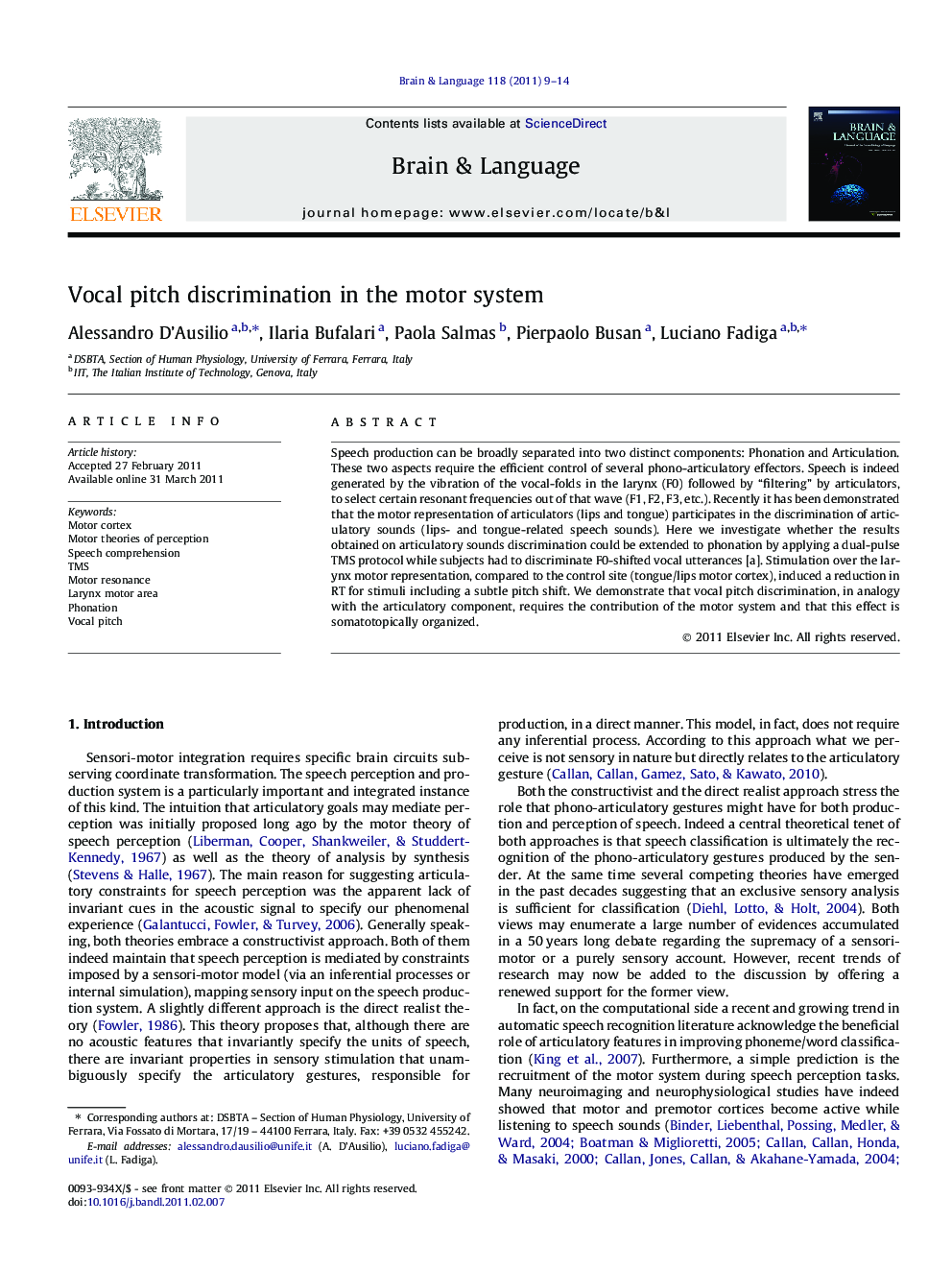| Article ID | Journal | Published Year | Pages | File Type |
|---|---|---|---|---|
| 925525 | Brain and Language | 2011 | 6 Pages |
Speech production can be broadly separated into two distinct components: Phonation and Articulation. These two aspects require the efficient control of several phono-articulatory effectors. Speech is indeed generated by the vibration of the vocal-folds in the larynx (F0) followed by ‘‘filtering” by articulators, to select certain resonant frequencies out of that wave (F1, F2, F3, etc.). Recently it has been demonstrated that the motor representation of articulators (lips and tongue) participates in the discrimination of articulatory sounds (lips- and tongue-related speech sounds). Here we investigate whether the results obtained on articulatory sounds discrimination could be extended to phonation by applying a dual-pulse TMS protocol while subjects had to discriminate F0-shifted vocal utterances [a]. Stimulation over the larynx motor representation, compared to the control site (tongue/lips motor cortex), induced a reduction in RT for stimuli including a subtle pitch shift. We demonstrate that vocal pitch discrimination, in analogy with the articulatory component, requires the contribution of the motor system and that this effect is somatotopically organized.
► Statement of significance to the neuroscience of language: ► Extend the motor somatotopy of speech perception to the larynx representation. ► Functional dissociation between phonation and articulation also in perception. ► Demonstrate the role of the motor system also in vocal pitch discrimination.
